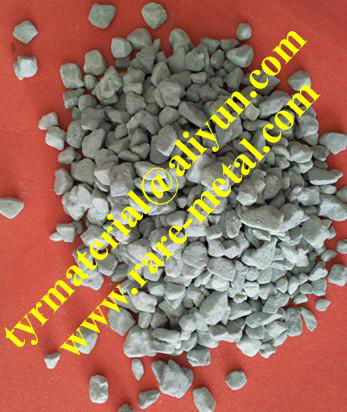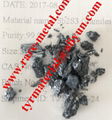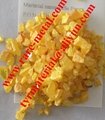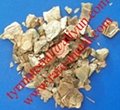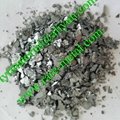
|
|
|
|
Molybdenum trioxide MoO3 granules use in thin film coating CAS 1313-27-5
Model No.︰
MoO3
Brand Name︰
TYR
Country of Origin︰
China
Unit Price︰
US $ 200 / pc
Minimum Order︰
1 pc
Product Description
Molybdenum (MoO3) ceramic sputtering target material
Purity: 99.9%
Color: White, gray Black
Shape: pieces, granules, rods, tablets
Spec.:
Pellets: 10mm dia. X 5mm L e.t.c
Pieces, Granules: 1-6mm, 3-12mm e.t.c
Made sputtering targets method: hot pressing (HP) and vacuum melting, vacuum sintering
Molar mass: 143.95 g·mol−1
Appearance: yellow or light blue solid
Density: 4.69 g/cm3, solid
Melting point: 795 °C (1,463 °F; 1,068 K)
Boiling point: 1,155 °C (2,111 °F; 1,428 K) sublimes
Molybdenum trioxide MoO3 is produced on the largest scale of any molybdenum compound. It occurs as the rare mineral molybdite. Its chief application is as an oxidation catalyst and as a raw material for the production of molybdenum metal.
Uses:
Molybdenum trioxide is used to manufacture molybdenum metal, which serves as an additive to steel and corrosion-resistant alloys. The relevant conversion entails treatment of MoO3 with hydrogen at elevated temperatures
It is also a component of the co-catalyst used in the industrial production of acrylonitrile by the oxidation of propene and ammonia.
Because of its layered structure and the ease of the Mo(VI)/Mo(V) coupling, MoO3 is of interest in electrochemical devices and displays. Molybdenum trioxide has also been suggested as a potential anti-microbial agent, e.g., in polymers. In contact with water, it forms H+ ions that can kill bacteria effectively. However, the issue of keeping the catalyst clean in an environment that would exploit such antimicrobial properties has not been explored.
We also supply below oxie ceramic sputtering targets material:
| Material Name | Formula | Purity | Form |
| Aluminum Oxide | Al2O3 | 99.99% | Ceramic, Crystal |
| Silicon Oxide | SiO | 99.9% | Ceramic, Crystal |
| Silicon Dioxide | SiO2 | 99.995% | Ceramic, Crystal |
| Titanium Dioxide | TiO2 | 99.99% | Ceramic |
| Titanium Oxide | Ti2O3 | 99.99% | Ceramic, Crystal |
| Lanthanum Titanium Oxide | LaTiO3 | 99.99% | Ceramic |
| Zinc Oxide | ZnO | 99.99% | Ceramic |
| Zirconium Oxide | ZrO2 | 99.95% | Ceramic |
| Titanium Oxide | Ti4O7 | 99.99% | Ceramic |
| Tin Oxide | SnO | 99.9% | Ceramic |
| Iron Oxide | Fe2O3 | 99.9% | Ceramic |
| Strontium Titanate | SrTiO3 | 99.9% | Ceramic |
| Indium Tin Oxide | ITO | 99.99% | Ceramic |
| Magnesium Oxide | MgO | 99.9% | Ceramic, Crystal |
| Titanium Oxide | TiO | 99.99% | Ceramic |
| Trititanium pentoxide | Ti3O5 | 99.99% | Ceramic, Crystal |
| Tantalum Pentoxide | Ta2O5 | 99.99% | Ceramic |
| Zirconium Titanium Oxide | ZrO2-TiO2 | 99.9% | Ceramic |
| Praseodymium Titanate | PrTiO3 | 99.9% | Ceramic |
| Zirconium Magnesium Oxide | ZrO2-MgO | 99.99% | Ceramic |
| Zirconium Tantalum Oxide | ZrO2-Ta2O5 | 99.99% | Ceramic |
| Niobium Pentoxide | Nb2O5 | 99.99% | Ceramic |
| Tin Oxide | SnO2 | 99.9% | Ceramic |
| Barium Titanate | BaTiO3 | 99.9% | Ceramic |

